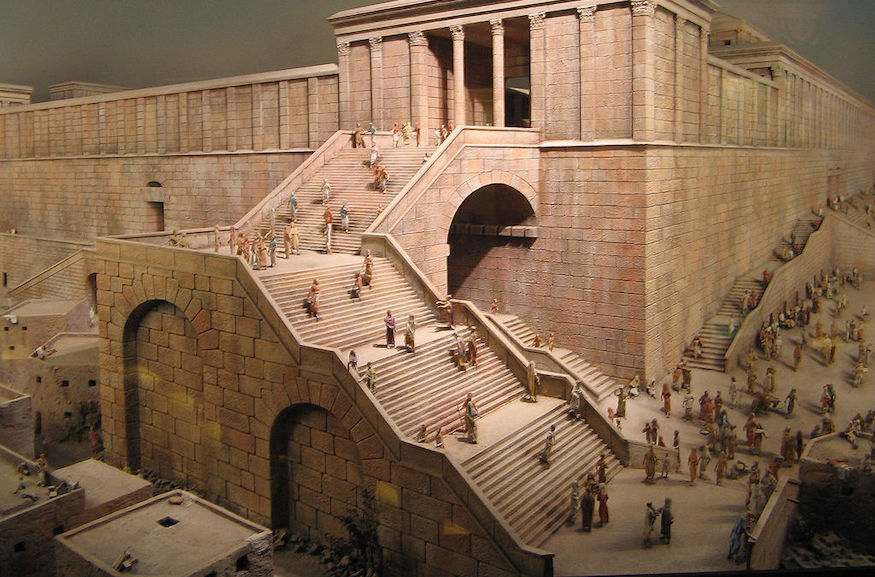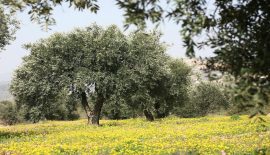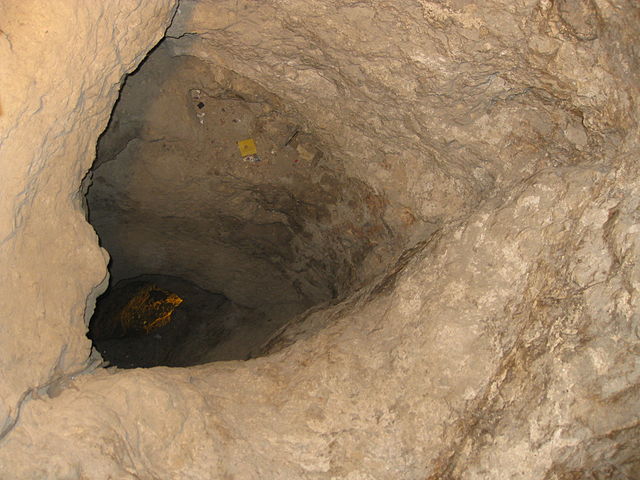Officers and Gentlemen
Infuriated with the Jewish Bar Kochva uprising that took place between 132- 136 AD, the Roman Emperor Hadrian brought over his legions and crushed the revolt. Although the destruction of the Second Temple had taken place just a few decades before, this time the Roman punitive measures on the Jews of Judea were even more disastrous. Some scholars even describe the crushing of the revolt as nothing short of genocide. When Hadrian destroyed the Jewish kingdom of Judea, he renamed the land “Syria Palestina” – from a derivative of the word “Philistine,” the most notorious enemies of the Biblical Israelites.
“When Hadrian destroyed the Jewish kingdom of Judea, he renamed the land “Syria Palestina””
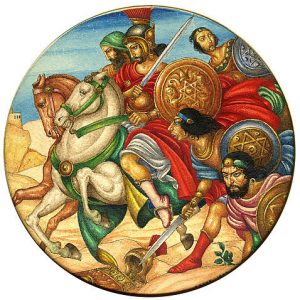
Arthur Szyk,1927, Bar Kochba, watercolor and gouache on paper | Photo: Wikimedia Commons fromThe Arthur Szyk Society, Burlingame, CA 94070 (www.szyk.org)
Hadrian’s renaming of the area has convoluted and confused history, that until today remains evident in the likes of the media who engage in fake news, “reporting” there was a county called Palestine that predated the Jews, and that modern Israel has colonised the Palestinian homeland.
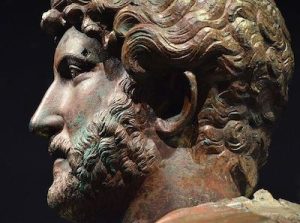
Hadrian- An Emperor Cast in Bronze from the Israel Museum | Photo: Wikimedia Commons by Carole Raddato
After the Bar Kochba rebellion, Judea would lay waste for two thousand years, up until the 19th century when the British and French began to compete for the Middle East. Both colonial powers sent teams of archeologists, and came back to their native lands with the treasures of where they had been.
During those times in Europe, there was a lack of scientific research into the Land of Israel. A British group of Christian theologians, explorers, scholars and historians set up an organisation called the PEF (Palestine Exploration Fund) to tackle this issue. They set out on expeditions to the Land of Israel for scientific research with the goal of publishing detailed maps, site plans, photographs, and journals of their discoveries. Many of these British explorers believed they were living in the days when most of the Jewish people would return to the land. Although they were just sixty years too early to see the Bible come true, nevertheless their work remains a major foundation upon which the studies of the Land of Israel rests.
Their first expedition was led by 29-year-old Captain Charles Wilson. His aim was to dig to get a clearer idea of how many Biblical sights have been hidden under layers of earth for millennia. His discoveries were contagious.
“Today many of the antiquities in Jerusalem are named after these British explorers”
Waiting in line to do a survey of ancient Jerusalem was Charles Warren. He was interested in examining the foundations of the Temple Mount to determine the exact position of where the Jewish Temple had once stood. That was not an easy task. Jerusalem was under Muslim rule. Numerous times Warren risked upsetting the Muslim authorities, which could have been met with a hefty prison sentence or even worse. In addition, he risked his life by digging under the Temple Mount, and he did so at night. With a torch in his mouth he navigated massive rocks, unstable debris of the two-thousand-year destruction and deep shafts – which if fallen into, would have swallowed him up forever. The hours spent underground eventually cost Warren his health. In 1870, he was forced to leave the work that he loved and return to England where, when feeling better, took up the position of Britain’s Commissioner of Police. In Israel Warren is famous for his discovery of the City of David. In England this part of his life is unknown. Instead he is famous only as the British Police Commissioner who oversaw the gory case of “Jack the Ripper” a serial killer who murdered 5 women on the murky streets of London.
Today many of the antiquities in Jerusalem are named after these British explorers. For example, named after Edward Robinson is “Robinson’s Arch”, the remains of a massive stone bridge which stretched from the Temple Mount over the Roman street that lay below.
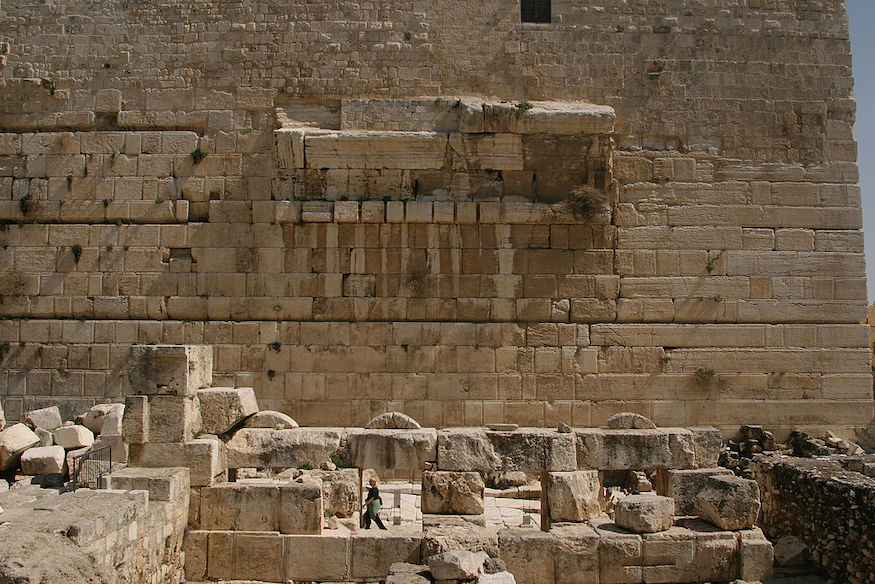
The remains of Robinson’s Arch on the western side of the Temple Mount. Build by King Herod in 37 BC | Photo: Wikimedia Commons by Brian Jeffery Beggerly
“Warren’s Shaft” is one of the most visited sites in Jerusalem. A part of the subterranean and magnificent City of David, scholars believe today that this shaft is probably where King David and his men came up to conquer Jerusalem from the Jebusites.
Nature was also a subject for the PEF to document. Most famous of their natural discoveries is a medium size and rather cheeky bird who can be found in Ein Gedi and along the Dead Sea. Shimmering black with a flash of orange on the wing, the daring little bird sings and lingers at the feet of hungry tourists hoping that some crumbs will fall to the ground. No wonder then, that in Hebrew, this flirtatious creature is known as the “bimbo of the desert.” But in academic speak, it is known as the “Tristram Starling,” after Reverend Henry Baker Tristram who first discovered the bird on a trip to the Land of Israel with The PEF.
After months of exploring, these brave men of the PEF produced the first series of extremely detailed reconnaissance maps, created to the scale of one inch per mile. On the maps were hand sketches of various monuments and the corresponding Arabic names of places which they had come to be known by, by the local Bedouins. The close connection between the Arabic names and the Hebrew points to the Biblical antiquity and the authentic history of these ancient Jewish sites. The maps continued to be published in various formats until the outbreak of World War I. They contain a vast amount of topographical and geographical information, that even our modern technology finds hard to exceed. Information includes the distribution of woodlands, dry river beds, the alignment of roads and paths, flour mills, aqueducts, numerous villages and ruins.
Their findings were published. The excitement spread around Christian Britain like wildfire, causing a massive rise in the purchase of bibles and church attendance. The British public awakened to the fact that they were living in historic days, days that in their own lifetime, they hoped to see a return of the Jewish people to Israel.
“In the end the British broke their promises”
The findings of the PEF were also passed onto the British government which may well have been a contributing factor to the Balfour Declaration. The 1917 government document famously stated, “Her Majesty’s government views with favour the establishment in Palestine of a national home for the Jewish people.”
In the end the British broke their promises. Within under thirty years, the destruction of Europe’s Jews was almost complete. But even the stubbornness of the British who refused to let holocaust survivors into their Mandate Palestine after the war, could not deter the prophesied return of our ancient people to our ancient land.
